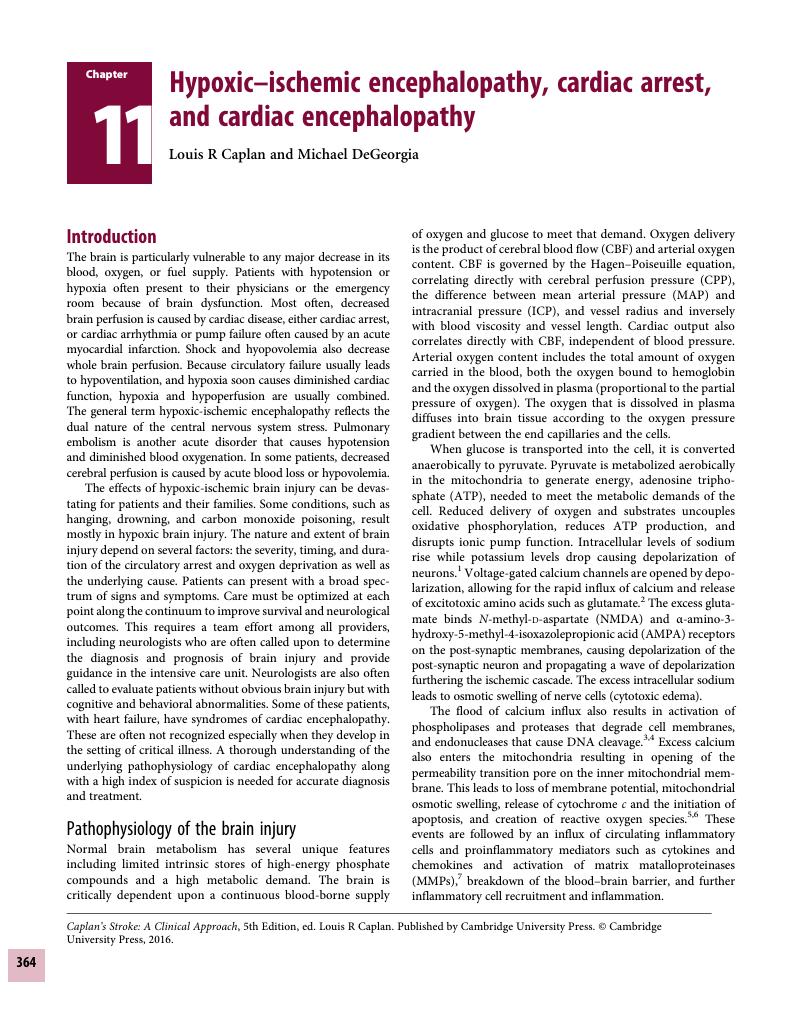Book contents
- Caplan’s Stroke
- Caplan’s Stroke
- Copyright page
- Contents
- Preface
- Contributors
- Part I General principles
- Part II Stroke syndromes
- Chapter 7 Large artery occlusive disease of the anterior circulation
- Chapter 8 Large vessel occlusive disease of the posterior circulation
- Chapter 9 Penetrating and branch artery disease
- Chapter 10 Brain embolism
- Chapter 11 Hypoxic–ischemic encephalopathy, cardiac arrest, and cardiac encephalopathy
- Chapter 12 Non-atherosclerotic vasculopathies
- Chapter 13 Subarachnoid hemorrhage, aneurysms, and vascular malformations
- Chapter 14 Intracerebral hemorrhage
- Chapter 15 Stroke in children and young adults
- Chapter 16 Spinal cord vascular disease
- Chapter 17 Cerebral venous thrombosis
- Part III Prevention, complications, and recovery–rehabilitation
- Index
- Plate section
- References
Chapter 11 - Hypoxic–ischemic encephalopathy, cardiac arrest, and cardiac encephalopathy
from Part II - Stroke syndromes
Published online by Cambridge University Press: 05 August 2016
- Caplan’s Stroke
- Caplan’s Stroke
- Copyright page
- Contents
- Preface
- Contributors
- Part I General principles
- Part II Stroke syndromes
- Chapter 7 Large artery occlusive disease of the anterior circulation
- Chapter 8 Large vessel occlusive disease of the posterior circulation
- Chapter 9 Penetrating and branch artery disease
- Chapter 10 Brain embolism
- Chapter 11 Hypoxic–ischemic encephalopathy, cardiac arrest, and cardiac encephalopathy
- Chapter 12 Non-atherosclerotic vasculopathies
- Chapter 13 Subarachnoid hemorrhage, aneurysms, and vascular malformations
- Chapter 14 Intracerebral hemorrhage
- Chapter 15 Stroke in children and young adults
- Chapter 16 Spinal cord vascular disease
- Chapter 17 Cerebral venous thrombosis
- Part III Prevention, complications, and recovery–rehabilitation
- Index
- Plate section
- References
Summary

- Type
- Chapter
- Information
- Caplan's StrokeA Clinical Approach, pp. 364 - 385Publisher: Cambridge University PressPrint publication year: 2016



